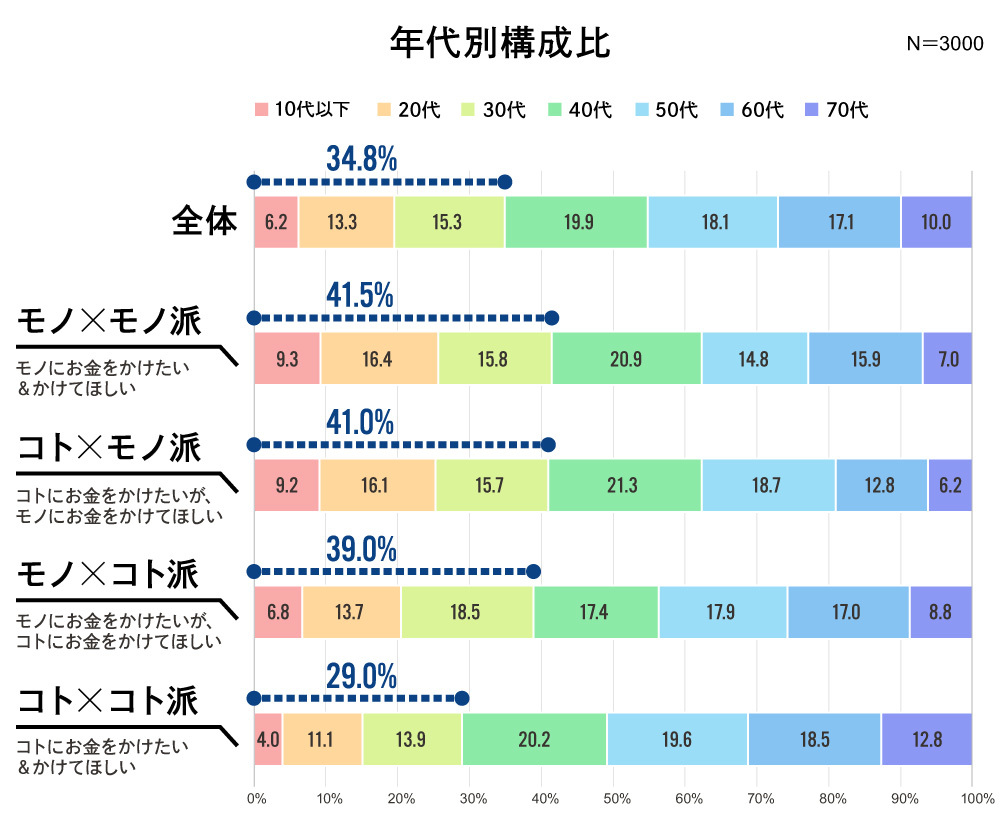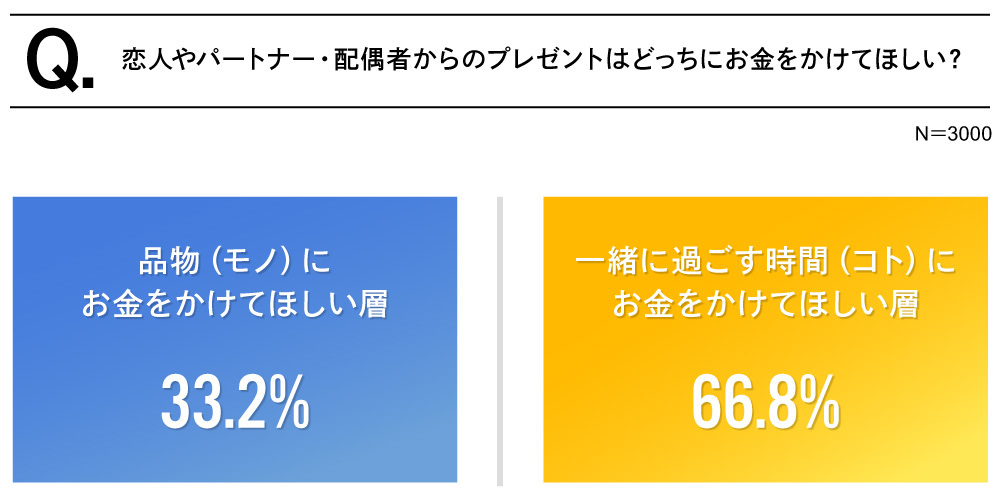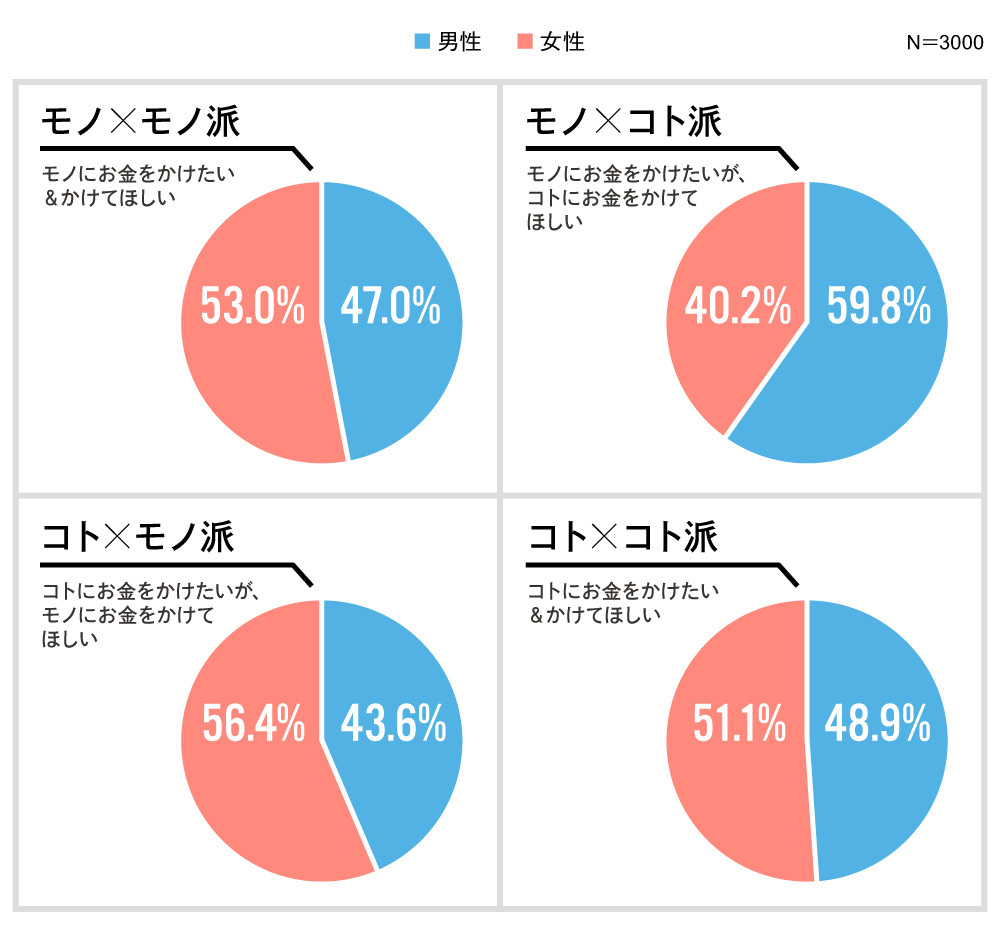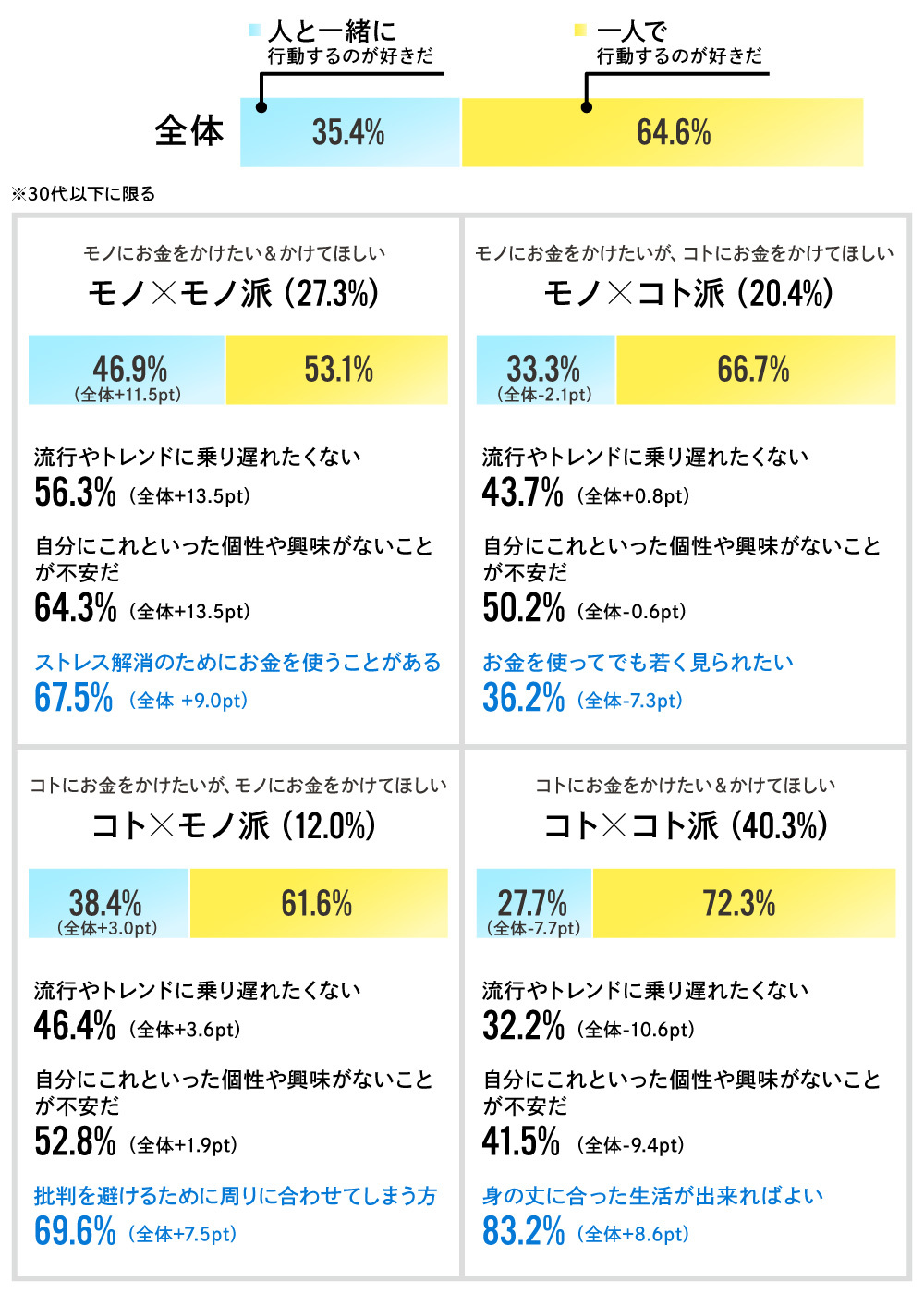"DENTSU DESIRE DESIGN (Dentsu Desire Design: hereafter DDD)" is a project that seeks to unravel the image of the modern consumer, which has become increasingly difficult for companies to see, by reexamining consumption consciousness starting from the concept of "Desire."
In this series, DDD members introduce their approach to consumer insights rooted in "desire" and future developments.
"Experiential consumption over material consumption" – this phrase has been commonplace for some time now, but to what extent do people actually seek "experiences"?
This time, DDD member Mizuho Higashiko explores the desires and values of today's youth through insights on "gifts" revealed in the latest "Heart-Moving Consumption Survey" ( details here ).
The Strength of "Experience Consumption" Revealed by the Latest Survey Results
This article defines "material consumption" as consuming "physical goods" and "experience consumption" as consuming "experiences or time." With this in mind, we often hear that since the pandemic eased, events and outings have become relatively free, and the consumption trend valuing experiences (experiences) over material goods has grown even stronger.
But does this hold true for all generations?
From my perspective as a Gen Z member, I feel many young people are still drawn to physical goods... Trendy brand items, the latest gadgets, and visually striking gifts aren't just Instagram-worthy; they also intuitively convey that "satisfaction of receiving."
Therefore, using the results of the "Heart-Moving Consumption Survey," we analyzed values starting from gift-giving attitudes.
What do people prioritize when choosing gifts?
Here, we'll analyze this from both the recipient's and giver's perspectives, referencing two questions presented as survey items:
[Question Item]
- For gifts from a lover, partner, or spouse, would you rather they spend money on the item itself? Or would you rather they spend money on time spent together?
- When giving a gift to a lover, partner, or spouse, would you rather they spend money on the item itself? Or would you rather they spend money on time spent together?
First, let's examine the results of the question about what recipients prefer the giver to spend money on.
Regarding the mindset of the gift recipient, 33.2% responded "I want them to spend money on the item" ("Agree" + "Somewhat agree"), while 66.8% responded "I want them to spend money on time spent together" ("Agree" + "Somewhat agree"). This shows that the "experience-oriented" group is more than twice as large as the "material-oriented" group.
Next, we compared the results by incorporating the perspective of the gift-giver.

Here, we classified each type into four categories—"Material × Material," "Material × Experience," "Experience × Material," and "Experience × Experience"—based on the order of "what they want to spend money on × what they want the recipient to spend money on" in their gift preferences.
The "Material × Material" group, who most strongly prioritize material items ("I want to spend money on material items & I want them to spend money on material items") for lovers, partners, or spouses, accounted for 23% ("Agree" and "Somewhat agree" combined).
Conversely, the "Experience × Experience" group, who most value experiences ("I want to spend money on time spent together & I want them to spend money on time spent together"), accounted for 48.6% ("Agree" + "Somewhat agree"). Here too, the gap was more than double.
This clearly indicates a trend toward prioritizing experiential consumption over material goods even in gift-giving attitudes.
Is Experience Consumption Truly Mainstream? Gift-Giving Attitudes by Gender and Age Group
Next, we examined the same classifications by gender.
The "Experience × Material Goods" group, who think "I want to spend money on time spent together, but I want them to spend money on material gifts," tended to be relatively more common among women. Conversely, the "Material Goods × Experience" group, who hold the value "I want to spend money on material gifts, but I want them to spend money on time spent together," tended to be relatively more common among men.
Next, we examine the age group composition. Here, the focus is on the proportion of those aged 30 and under within each type.

*Percentage composition (%) is rounded to the second decimal place, so the total may not always add up to 100%.
The "Things × Things" group is 41.5%, the "Experiences × Things" group is 41.0%, and the "Things × Experiences" group is 39.0%—all around 40%. Meanwhile, the "Experiences × Experiences" group is 29.0%, a difference of over 10 percentage points from the others. This same result was obtained even when focusing solely on those in their 20s or younger.
In other words, when limited to younger generations (including those in their 30s), a strong tendency toward material consumption in gift-giving remains evident even today.
The Truth About Younger Generations with More "Material" Preference—Exploring Trends by Type
When focusing solely on those aged 30 and under, what are the distinct characteristics of each group: "Material × Material," "Experience × Material," "Material × Experience," and "Experience × Experience"?
What we want to focus on here is the relationship with another question asked in the survey: "[A] I like doing things with people [B] I like doing things alone."
The results show that "[B] I like acting alone" was highest among the "Experience × Experience" group and lowest among the "Material × Material" group.
While those who prioritize experiences (Koto) might seem to generally prefer activities with others, this insight reveals that their strong desire to share experiences (Koto) specifically applies to gifts for romantic partners or significant others, rather than general social interactions.
When selecting gifts, considering these type-specific characteristics will enable more accurate recommendations.
Through this analysis, it became clear that while "experience consumption" is mainstream, "material consumption" remains strong among those in their 30s and younger. Furthermore, differences exist not only in the points they prioritize regarding gift-giving, but also in their spending habits and overall life philosophies.
Gifts are not merely tokens; they are important means to convey feelings and deepen relationships. That's precisely why a gift naturally reflects the giver's values.
The shift from goods consumption to experience consumption can also be seen as an example of how ways of interacting with others and methods for conveying feelings and thoughts to important people evolve alongside changes in the times and values.
As Christmas approaches, we sincerely hope these survey findings will help you choose the perfect gift for your loved ones.
At DDD, we will continue to conduct heartfelt consumption surveys and monitor consumer trends!
If you're interested, please feel free to contact us.
【Contact Information】
DENTSU DESIRE DESIGN (Dentsu Inc. Design)
E-Mail: ddd-project@dentsu.co.jp 
【Survey Overview 】
Title: 9th "Heart-Moving Consumption Survey"
Survey Purpose: Analyze consumer consciousness, which is becoming increasingly difficult to visualize due to the ever-changing social environment, from the perspective of consumer desire, and decipher the future of Japan's consumer society.
・Target Area: Nationwide, Japan
・Respondent Criteria: Men and women aged 15 to 74
・Sample Size: Total of 3,000 samples
(Allocated proportionally based on the population distribution of 15–19-year-olds, those in their 20s–60s, and 70–74-year-olds)
・Survey Method: Online survey
・Survey Period: November 8 (Fri) to November 13 (Wed), 2024
・Survey Sponsor: Dentsu Inc. DENTSU DESIRE DESIGN
・Survey Agency: Dentsu Macromill Insight, Inc.











